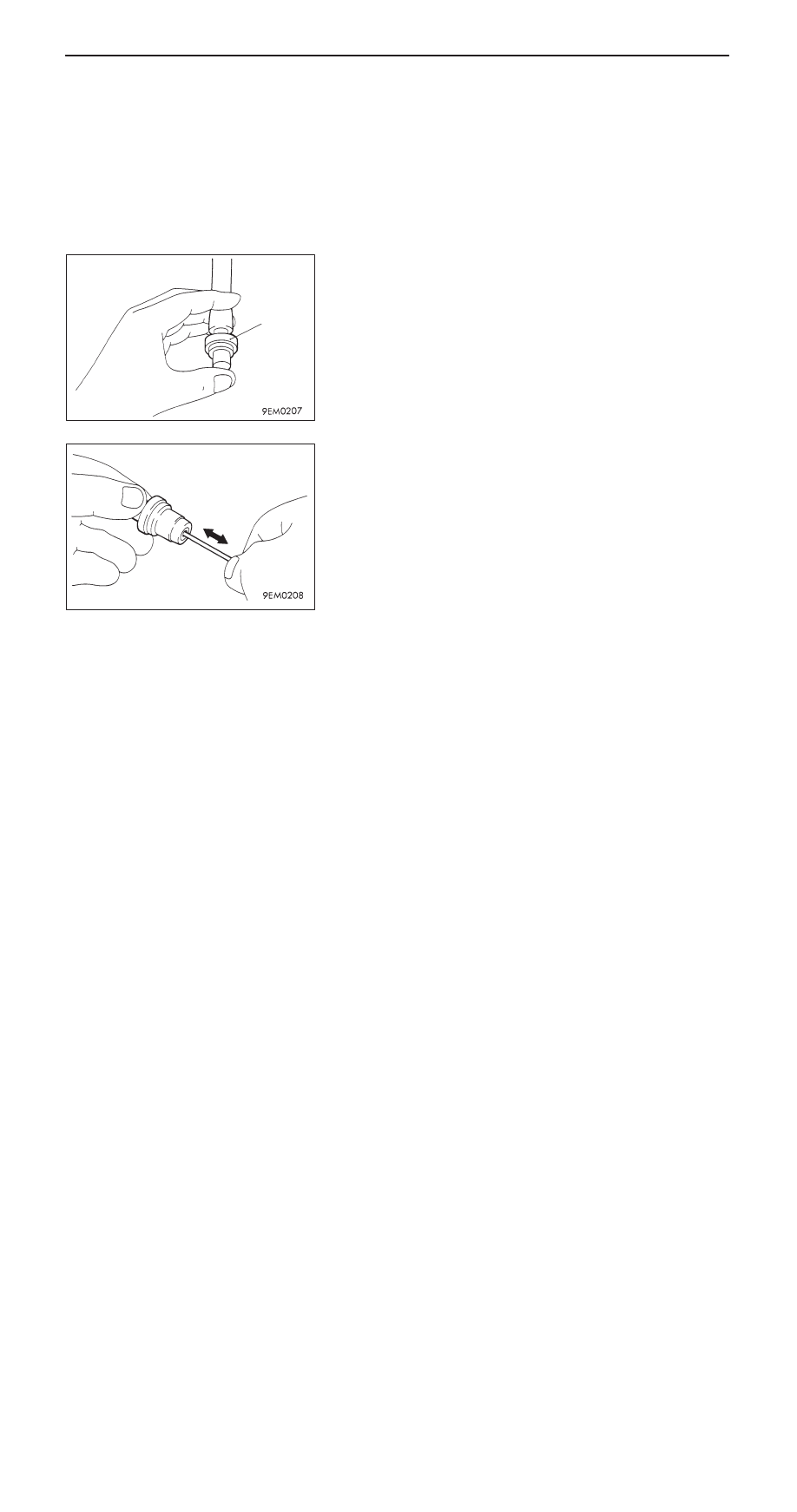Mitsubishi Pajero Pinin. Manual - part 160

ENGINE AND EMISSION CONTROL –
Emission Control System
17-9
POSITIVE CRANKCASE VENTILATION SYSTEM
CHECK
1.
Remove the ventilation hose from the PCV valve.
2.
Remove the PCV valve from the rocker cover.
3.
Reinstall the PCV valve at the ventilation hose.
4.
Start the engine and run at idle.
5.
Place a finger at the opening of the PCV valve and check
that vacuum of the intake manifold is felt.
NOTE
At this moment, the plunger in the PCV valve moves back
and forth.
6.
If vacuum is not felt, clean the PCV valve or replace it.
PCV VALVE CHECK
1.
Insert a thin rod into the PCV valve from the side shown
in the illustration (rocker cover installation side), and move
the rod back and forth to check that the plunger moves.
2.
If the plunger does not move, there is clogging in the
PCV valve. In this case, clean or replace the PCV valve.
PCV valve